Circular Dichroism Microspectroscopy
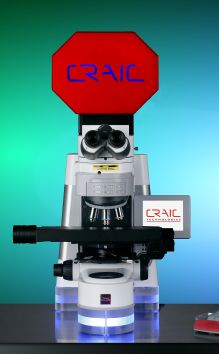
Introduction
CRAIC Technologies™ is proud to offer Circular Dichroism microspectroscopy. This capability is important in biology and materials science as Circular Dichroism (CD) is the most widely used chiroptical method for analyzing chiral substances and characterizing biomolecules. By incorporating it into a microspectrometer, one is now able to acquire CD microspectra of micron-scale samples.
Designed for many different applications, the CD microspectroscopy package is exclusive to CRAIC Technologies microspectrometers. Contact us today to learn more about the novel technology.
Circular Dichroism Microspectroscopy
Spectroscopy of Chiral Substances
| CD microspectroscopy is a valuable method for studying metal-protein interactions and resolving individual d–d electronic transitions. Additionally, it has proven to be highly effective for determining enantiomeric excess in asymmetric synthesis as well as the optical properties of nanostructured arrays. | 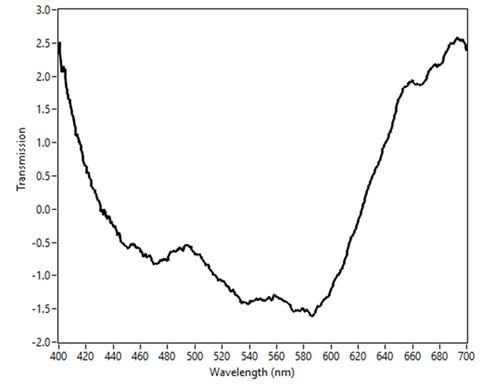 |
Science of Circular Dichroism
Circular Dichroism (CD) spectroscopy is a technique that measures the differential absorption of left- and right-circularly polarized light by chiral molecules. This phenomenon arises due to the molecular asymmetry in chiral compounds, such as proteins, DNA, and other biomolecules. CD microspectroscopy integrates the capabilities of CD spectroscopy with that of an optical microscope.
CD microspectroscopy provides information about the secondary and tertiary structures of biomolecules, their folding, stability, and interactions with ligands or metals. It is widely used to analyze conformational changes, study enantiomeric purity, and characterize structural features in asymmetric synthesis. This non-destructive technique is particularly valuable in biochemistry, structural biology, and pharmaceutical research for its sensitivity and versatility in studying chirality and molecular structure.
Applications
Applications
- Nanostructured Arrays
- Protein and Biomolecule Analysis
- Chiral Substance Analysis
- Ligand-Binding Studies
- Conformational Studies
- Pharmaceutical Applications
- ...and much more.
Support
CRAIC Technologies provides service and support for it's instruments worldwide. CRAIC Technologies service engineers offer instrument repair, maintenance, training and technical support for all aspects of CRAIC Technologies products.
The lit microscope base and the lit octagonal optical head are trademarks of CRAIC Technologies, Inc. CRAIC Technologies, 2030PV™, FLEX™, 508PV™, Apollo™, GeoImage™, rIQ™, Lambdafire™, Lightblades™ and "Perfect Vision for Science" are all trademarks of CRAIC Technologies, Inc. Instrument features offered depend upon instrument configuration. Features listed here may not be present in some configurations.
*Features and specifications depend upon instrument configuration. Specifications subject to change without notice.
UV-visible-NIR microscopes, UV-visible-NIR microspectrometers and Raman microspectrometers are general purpose laboratory instruments. They have not been cleared or approved by the European IVD Directive, the United States Food and Drug Administration or any other agency for diagnostic, clinical or other medical uses.
Scorpii™ Advanced UV-Visible-NIR Illumination System
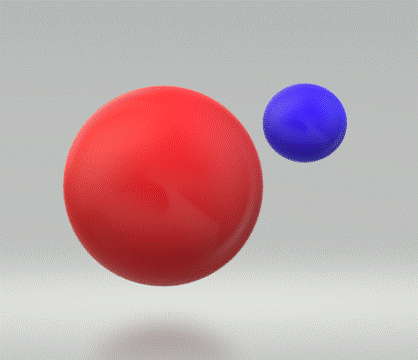
Introduction
Scorpii™ Advanced Illumination System is a broadband lighting package designed specifically for microspectroscopy. The Scorpii™ system, designed exclusively for use with CRAIC microspectrophotometers, is a broadband lighting package that offers a spectral range from the deep ultraviolet through the visible range and far into the near infrared region. Scorpii™ also features enhanced source stability for improved signal-to-noise ratios in spectra, dramatically longer lamp life and CRAIC Technologies sophisticated SampleSafe™ technology. SampleSafe™ was conceived as a way to protect your samples from such effects as photobleaching and other photochemical issues. Scorpii™ is fully integrated with CRAIC Technologies Lambdafire microspectrometer control and analysis software.
Scorpii™ is now offered with CRAIC Technologies most advanced UV-vis-NIR microspectrometers and microscopes. As such, Scorpii™ is the heart of the next generation PRO series of microspectrophotometers.
Advantages
Scorpii™ Advanced Illumination System offers the following features
- Designed for microspectroscopy
- Deep UV to NIR spectral range for both transmission and reflectance illumination
- SampleSafe™ automated sample protection technology
- Dramatically longer life light sources
- Enhanced stability for improved spectral signal to noise
- Controlled by CRAIC Technologies Lambdafire™ spectral analysis software
Spectral Results
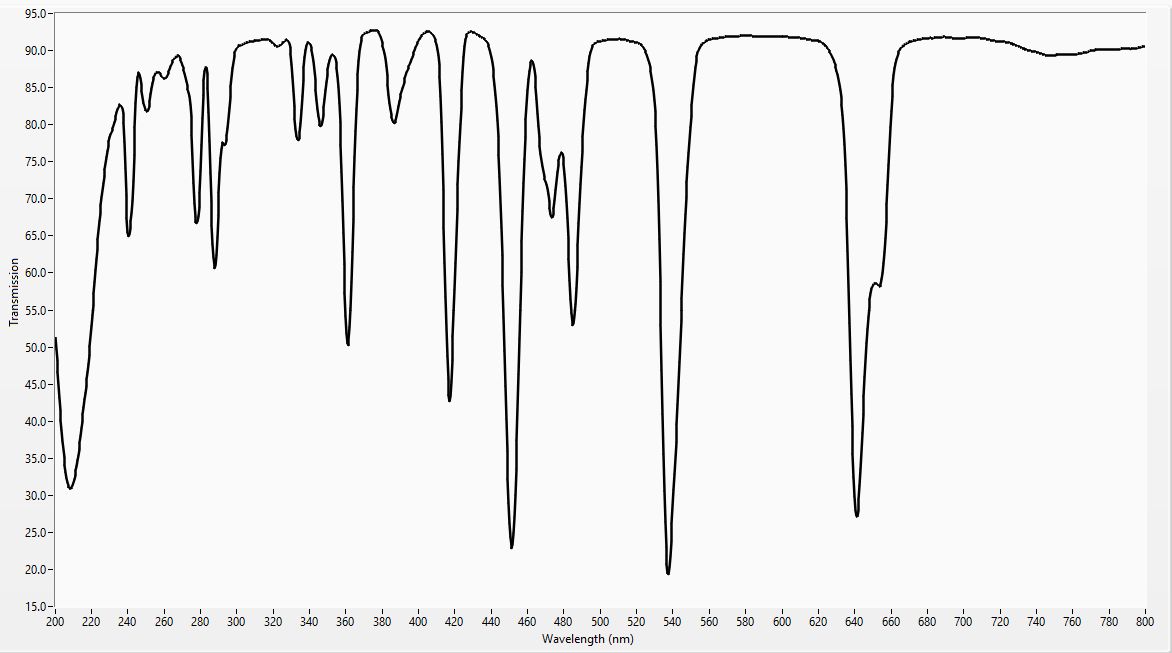
200 to 800 nm spectrum of holmium oxide solution taken with Scorpii™ Advanced Illumination System fitted on a 2030PV PRO™ microspectrometer
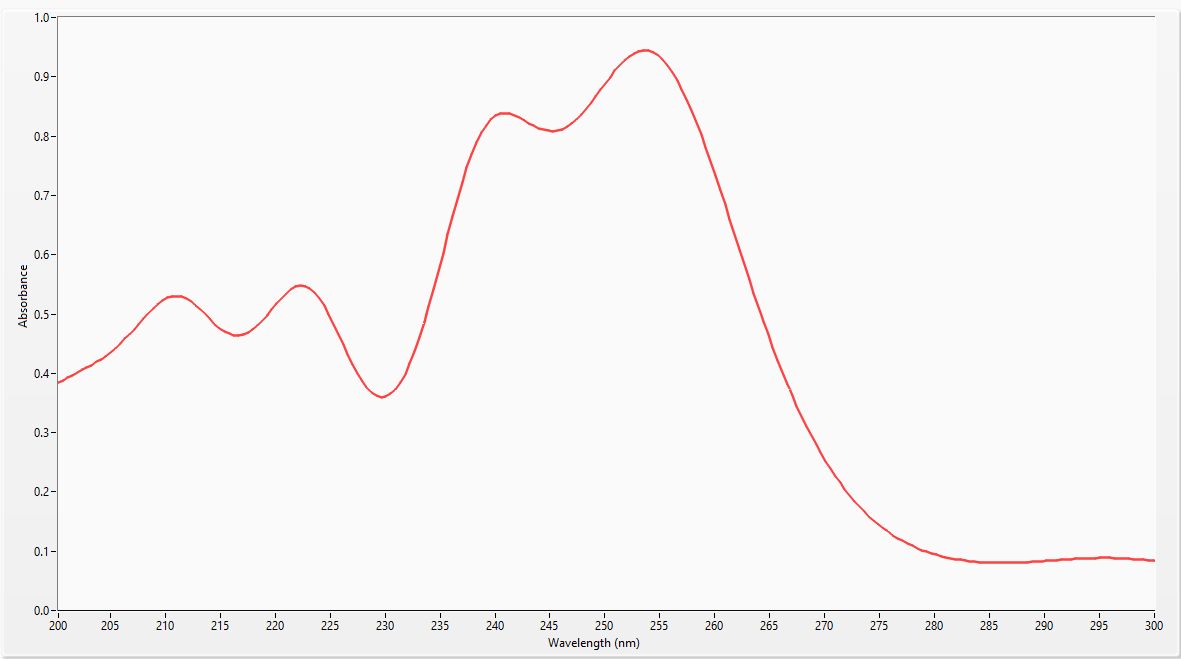
200 to 300 nm spectrum of RMRE solution taken with Scorpii™ Advanced Illumination System fitted on a 2030PV PRO™ microspectrometer
Improved Spectra
Applications
- Absorbance/Transmission microspectroscopy
- Reflectance microspectroscopy
- Polarization anisotropy
- Polarization microspectroscopy
- Microcolorimetry
- Film thickness measurements
Support
CRAIC Technologies provides service and support for it's instruments worldwide. CRAIC Technologies service engineers offer instrument repair, maintenance, training and technical support for all aspects of CRAIC Technologies products.
*Features and specifications depend upon instrument configuration. Specifications subject to change without notice.
UV-visible-NIR microscopes, UV-visible-NIR microspectrometers and Raman microspectrometers are general purpose laboratory instruments. They have not been cleared or approved by the European IVD Directive, the United States Food and Drug Administration or any other agency for diagnostic, clinical or other medical use.
Photoluminescence Microspectroscopy
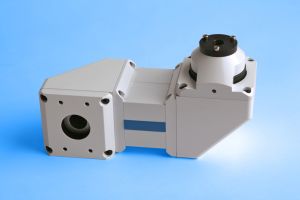
Introduction
CRAIC Technologies™ offers modules to add photoluminescence capabilities to microspectrophotometers. Designed for use with lasers from the UV to the near IR, photoluminescence capabilities open a new realm of analysis. With photoluminescence (PL) microspectroscopy vital in many fields of research, ask CRAIC how we can help you today.
Applications
Applications
- Materials Science
- Biology
- Chemistry
- Physics
- Geology
- Semiconductors
- Nanotechnology
Support
CRAIC Technologies provides service and support for it's instruments worldwide. CRAIC Technologies service engineers offer instrument repair, maintenance, training and technical support for all aspects of CRAIC Technologies products.
The 20/30 PV™ Microspectrometer can take spectra and images of microscopic samples from the deep ultraviolet to near infrared with one seamless operation. It can acquire microspectra™ and images in absorbance, reflectance, and fluorescence. The microspectrometer is offered with both the DirecVu™ to view samples by eye as well as with a high resolution UV-visible-NIR digital imaging system.
 The lit microscope base and the lit octagonal optical head are trademarks of CRAIC Technologies, Inc. CRAIC Technologies, 2030PV™, FLEX™, 508PV™, Apollo™, GeoImage™, rIQ™, Lambdafire™, Lightblades™ and "Perfect Vision for Science" are all trademarks of CRAIC Technologies, Inc. Instrument features offered depend upon instrument configuration. Features listed here may not be present in some configurations.
The lit microscope base and the lit octagonal optical head are trademarks of CRAIC Technologies, Inc. CRAIC Technologies, 2030PV™, FLEX™, 508PV™, Apollo™, GeoImage™, rIQ™, Lambdafire™, Lightblades™ and "Perfect Vision for Science" are all trademarks of CRAIC Technologies, Inc. Instrument features offered depend upon instrument configuration. Features listed here may not be present in some configurations.*Features and specifications depend upon instrument configuration. Specifications subject to change without notice.
UV-visible-NIR microscopes, UV-visible-NIR microspectrometers and Raman microspectrometers are general purpose laboratory instruments. They have not been cleared or approved by the European IVD Directive, the United States Food and Drug Administration or any other agency for diagnostic, clinical or other medical use.
Add spectroscopy to your microscope
The 508 PV™ microscope spectrophotometer adds spectroscopy and digital color imaging to your optical microscope or probe station. It can also be used to upgrade an older microspectrometer with cutting edge optics, electronics and software.
The 508 PV™ attaches to an open photoport and enables you to collect transmission, reflectance, polarization or even fluorescence and luminescence spectra of microscopic samples with a properly equipped microscope. Featuring the Lightblades™ spectrophotometer technology from CRAIC, the 508 PV™ spectrophotometer has a usable spectral range from the ultraviolet to the near infrared. With the 508 PV™, you can acquire high quality spectra of even sub-micron samples rapidly, non-destructively and with ease.
The 508 PV™ microscope spectrophotometer is ideal for diverse applications such as colorimetry of pixels on flat panel displays, reflectometry of vitrinite coal and source rock, or thin film thickness measurements of optics and semiconductors. The 508 PV™is also a cost effective way to upgrade older microspectrometers to the latest hardware and software.
Introduction
Features
Add the 508 PV™ to any microscope or probe station for spectroscopy, colorimetry and micro spot film thickness.
- Featuring Lightblades™ spectrophotometers designed specifically for microspectroscopy
- User selected spectral range from deep UV to NIR
- 250 to 2100 nm available spectral range
- Permanently calibrated, variable measurement areas even below a micron
- Thermoelectric cooling available to improve signal-to-noise ratios and long term stability.
- Incorporates high resolution, color digital imaging...up to 6 megapixels available
- Featured with Lambdafire™ spectroscopy and imaging control and analysis software. Lambdafire™ also includes touchscreen control.
- Calibrated, variable measurement areas even smaller than a micron
- Transmission microspectroscopy
- Reflectance microspectroscopy
- Fluorescence microspectroscopy
- Polarization microspectroscopy
- Photoluminescence microspectroscopy
- Thin film thickness measurements
- Colorimetry of microscopic samples
- Refractive index measurements with the rIQ™ package
- Manual or fully automated operation
- Precision temperature control of samples
- Specialized software including statistical analysis, spectral databasing, image analysis and more
- NIST traceable microspectrometer standards
- Easy to use and maintain
- From the experts in microspectroscopy
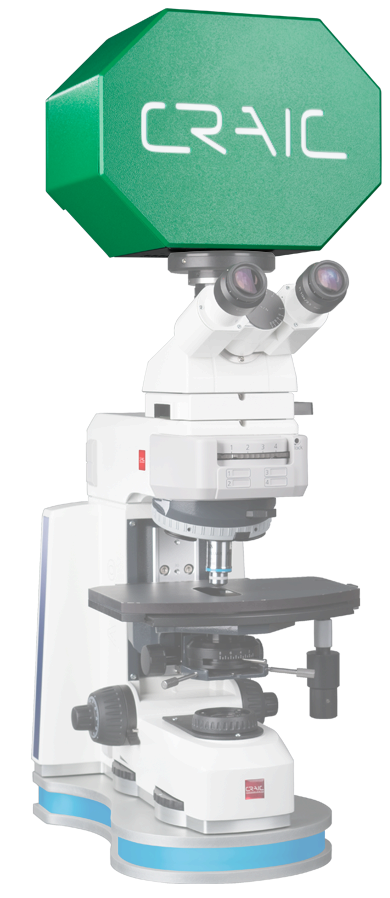
UV-vis-NIR Microspectroscopy
Adding spectroscopy to your microscope™
|
The 508 PV™ is a spectrophotometer, incorporating an imaging system, designed to add to any microscope or probe station with a photoport. Configurable for work ranging from the deep UV through the visible and into the near infrared, this powerful tool gives your systems new capabilities including film thickness measurements and colorimetry. Featuring Lightblades™ technology, the 508 PV™ also allows you the ability to measure transmission, reflectance, polarization and photoluminescence spectra of even sub-micron samples. |
Photoluminescence
Cutting edge fluorescence & luminescence
| The 508 PV™ can be configured for fluorescence and luminescence spectroscopy of even sub-micron samples. Featuring Lightblades™ technology and with the ability to measure the fluorescence and luminescence from the UV to the NIR, the 508 PV™ is a powerful tool for photoluminescence analysis of materials sciences, biology, geology and more. | 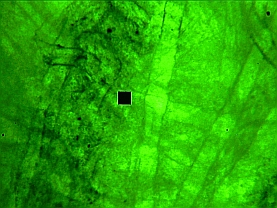 |
Polarization
Polarization Microspectroscopy
| The 508 PV™ can be configured to acquire the polarization spectra of microscopic samples. Featuring Lightblades™ technology, the 508 PV™ polarization microspectroscopy capabilities allow you to acquire spectra of birefringent and other types of samples quickly and easily. | 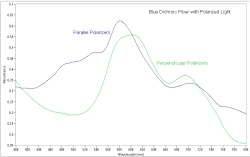 |
Spectral Surface Mapping
|
Combines hardware and software for automated spectral analysis and 5D mapping of samples with microscopic spatial resolution. 5D maps of the absorbance, transmission, reflectance, fluorescence, emission and Raman spectra of samples may be generated. |
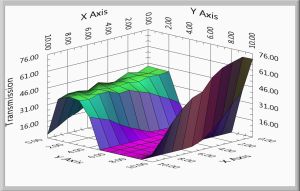 |
Imaging & Microscopy
High resolution color digital imaging
| The 508 PV™ features high resolution, color digital imaging with sophisticated software. It allows you to simultaneously see both the spectrophotometer entrance aperture and the sample. This makes it very easy to align the sample for measurements and to capture full color images under any measurement conditions. |
Applications
Applications
- Add spectroscopy to a microscope
- Add thin film thickness measurements to a probe station
- Upgrade an older microspectrophotometer
- Colorimetry of LCD and OLED displays
- Vitrinite reflectance of coal, coke and petroleum source rock
- Biotechnology research
Support
CRAIC Technologies provides service and support for it's instruments worldwide. CRAIC Technologies service engineers offer instrument repair, maintenance, training and technical support for all aspects of CRAIC Technologies products.
 The lit microscope base and the lit octagonal optical head are trademarks of CRAIC Technologies, Inc. CRAIC Technologies, 2030PV™, FLEX™, 508PV™, Apollo™, GeoImage™, rIQ™, Lambdafire™, Lightblades™ and "Perfect Vision for Science" are all trademarks of CRAIC Technologies, Inc. Instrument features offered depend upon instrument configuration. Features listed here may not be present in some configurations.
The lit microscope base and the lit octagonal optical head are trademarks of CRAIC Technologies, Inc. CRAIC Technologies, 2030PV™, FLEX™, 508PV™, Apollo™, GeoImage™, rIQ™, Lambdafire™, Lightblades™ and "Perfect Vision for Science" are all trademarks of CRAIC Technologies, Inc. Instrument features offered depend upon instrument configuration. Features listed here may not be present in some configurations.*Features and specifications depend upon instrument configuration. Specifications subject to change without notice.
UV-visible-NIR microscopes, UV-visible-NIR microspectrometers and Raman microspectrometers are general purpose laboratory instruments. They have not been cleared or approved by the European IVD Directive, the United States Food and Drug Administration or any other agency for diagnostic, clinical or other medical use.
Spectroscopy of microscopic areas on large samples
The 2030XL PRO™ microspectrophotometer is designed to acquire spectra, images, and film thickness measurements of microscopic features of large scale samples. "XL" stands for "extra large" and these are the types of samples for which this instrument was built. Built to meet your needs, the 2030XL PRO™ incorporates the latest technological advances in optics, electronics, spectroscopy and software to deliver the superior performance with unparalleled speed and capabilities. The ease-of-use for which CRAIC instruments are known has even been improved, making this instrument the cutting edge of UV-visible-NIR microspectroscopy.
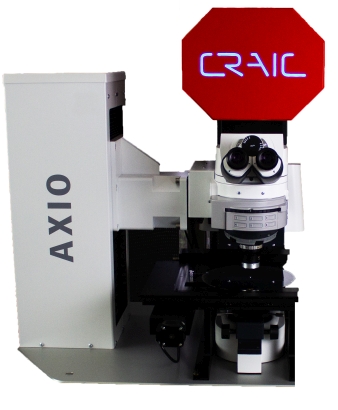
The 2030XL PRO™ microspectrophotometer allows you to measure UV-visible-NIR range transmission, absorbance, reflectance, emission and photoluminescent microspectra™ of features smaller than a micron across. Yet, depending upon the instrument configuration, the size of the sample can essentially be unlimited. Now you can map color variations within pixels of the biggest flat panel displays, measure film thickness of 300 mm wafers with ease or measure the fluorescence of the largest artworks.
Raman microspectroscopy, high resolution UV microscopy and even NIR microscopy are also offered.
The 2030XL PRO™ microspectrophotometer is simple to use, the measurements are non-destructive and the spectral data is unmatched.
Introduction
Features
Key Features*
|
UV-visible-NIR, Raman and PL microspectra™ of large samples.
|
|
UV-vis-NIR Microspectroscopy
Cutting edge microspectroscopy from the leaders
|
A fully integrated microspectroscopy unit that features a spectral range from the deep UV through the visible and into the near infrared. Simultaneous and direct imaging of both the sampling aperture and the sample makes for fast, accurate measurements. Featuring Scorpii™, SampleSafe™ and Lightblades™ technology, the 2030XL PRO™ gives you the ability to measure transmission, reflectance, polarization, Raman and fluorescence spectra of even sub-micron samples. CRAIC Technologies is also the only recognized source for NIST traceable microspectrometer standards. |
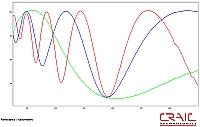 |
Raman Microspectroscopy
Flexible Raman Microspectroscopy
| When fitted with the CRAIC Apollo™ Raman spectrometer module, the 2030XL PRO™ is capable of Raman, resonance Raman and other types of measurements of microscopic samples. Modules include lasers, Raman spectrometers and the interface optics that allow you to collect high quality Raman spectra of your samples. |
Photoluminescence
High sensitivity emission microspectroscopy & imaging
| The 2030XL PRO™ can be configured for fluorescence and photoluminescence spectra and images of microscopic samples. Featuring Lightblades™ technology and with excitation ranging from the deep UV to the near infrared and the ability to measure the emission in the same range, the 2030XL PRO™ is a powerful tool for microscale photoluminescence spectroscopy in the materials sciences, biology, geology and more. | 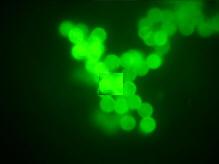 |
Polarization
Microspectroscopy & imaging of UV-visible-NIR polarization
| 2030XL PRO™ can be configured to acquire the polarization spectra and images of even the smallest samples. Featuring Lightblades™ technology and with a spectral range from the UV to the NIR, the 2030XL PRO™ polarization microspectroscopy capabilities are unparalleled. The spectra and images of birefringent and other types of samples with polarization characteristics can be acquired quickly and easily with this sophisticated system. |  |
Spectral Surface Mapping
|
Combines hardware and software for automated spectral analysis and 5D mapping of samples with microscopic spatial resolution. 5D maps of the film thickness, transmission, reflectance, fluorescence, emission and Raman spectra of samples may be generated. |
 |
UV-vis-NIR Microimaging
Superior image quality from the UV to the NIR
| The 2030XL PRO™ includes a unique UV-visible-NIR microscope with research grade optics. Featuring high resolution digital imaging for color, UV and the NIR regions, the 2030XL PRO™ has sophisticated imaging software. This gives you the ability for both real time and image capture of samples by transmission, reflectance, polarization and fluorescence microscopy quickly and easily. | 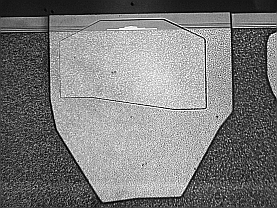 |
Applications
Applications
- Semiconductor Film Thickness
- MEMS devices
- Photovoltaic Panels
- Colorimetry of flat panel displays
- Intensity mapping of flat panel displays
- Microspectra™ of Questioned Documents
- Microspectra™ of Art Works
- or any other large scale samples...
Support
CRAIC Technologies provides service and support for it's instruments worldwide. CRAIC Technologies service engineers offer instrument repair, maintenance, training and technical support for all aspects of CRAIC Technologies products.
The lit microscope base and the lit octagonal optical head are trademarks of CRAIC Technologies, Inc. CRAIC Technologies, 2030PV™, FLEX™, 508PV™, Apollo™, GeoImage™, rIQ™, Lambdafire™, Lightblades™ and "Perfect Vision for Science" are all trademarks of CRAIC Technologies, Inc. Instrument features offered depend upon instrument configuration. Features listed here may not be present in some configurations.
*Features and specifications depend upon instrument configuration. Specifications subject to change without notice.
UV-visible-NIR microscopes, UV-visible-NIR microspectrometers and Raman microspectrometers are general purpose laboratory instruments. They have not been cleared or approved by the European IVD Directive, the United States Food and Drug Administration or any other agency for diagnostic, clinical or other medical use.

